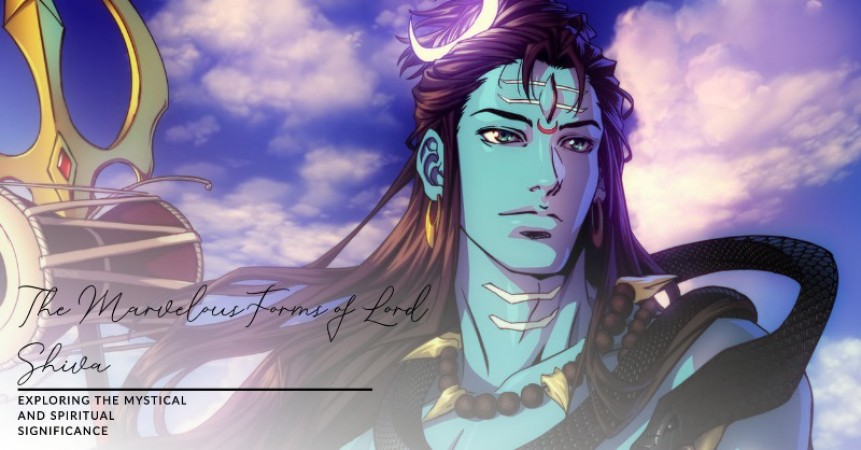
Lord Shiva, one of the most revered deities in Hinduism, is known as the destroyer and the transformer. He is a complex and multi-faceted god with various avatars or manifestations. Each avatar of Lord Shiva represents a different aspect of his divine nature and plays a significant role in Hindu mythology and spirituality. In this article, we will explore some of the prominent avatars of Lord Shiva and understand their significance.
Lord Shiva, also known as Mahadeva or the Great God, is a principal deity in Hinduism. He is considered the destroyer and the transformer in the divine trinity, consisting of Brahma (the creator), Vishnu (the preserver), and Shiva (the destroyer). Lord Shiva is often depicted with a trident (trishul) and a crescent moon on his head. He is also associated with the holy river Ganga, which flows through his matted hair.
Lord Shiva is regarded as the ultimate reality and the embodiment of infinite consciousness. He transcends time, space, and duality. Shiva is worshipped in various forms and avatars, each representing a specific aspect of his divine nature. These avatars allow devotees to connect with different facets of Lord Shiva's energy and seek his blessings for various purposes.
1. Nataraja - The Lord of Dance
Nataraja is one of the most iconic avatars of Lord Shiva. In this form, Shiva is depicted as a cosmic dancer who performs the Tandava, the divine dance of creation, preservation, and destruction. Nataraja symbolizes the eternal rhythm of the universe and the cycle of birth and death.
2. Ardhanarishvara - The Half-Male, Half-Female Form
Ardhanarishvara represents the synthesis of masculine and feminine energies. In this form, Lord Shiva is depicted as half-man (Shiva) and half-woman (Parvati). It signifies the union of opposites and the harmonious balance of the universe.
3. Bhairava - The Fierce Form
Bhairava is the fierce and terrifying aspect of Lord Shiva. He is often portrayed with a wrathful expression, adorned with a garland of skulls and holding a trident. Bhairava destroys evil forces and protects the devotees from negative energies.
4. Pashupati - The Lord of Animals
Pashupati is the lord of all creatures and represents Lord Shiva's affinity with animals. He is depicted as a divine herdsman surrounded by various animals, emphasizing his role as the protector and nurturer of all living beings.
5. Mahakala - The Great Time
Mahakala is the embodiment of time and represents the eternal nature of Shiva. He is depicted as a fearsome deity with multiple arms and a fierce expression. Mahakala signifies the transient nature of life and the ultimate reality beyond time and space.
6. Veerbhadra - The Fierce Warrior
Veerbhadra is a powerful warrior created by Lord Shiva to avenge the death of his wife, Sati. He is depicted as a fierce warrior with multiple arms, holding weapons and standing on a demon. Veerbhadra embodies the wrathful and protective aspect of Lord Shiva.
7. Dakshinamurthy - The Guru of All Knowledge
Dakshinamurthy is the embodiment of knowledge and wisdom. In this form, Lord Shiva is depicted as a meditating sage who imparts spiritual wisdom to his disciples. Dakshinamurthy symbolizes the inner guru who guides seekers on the path of self-realization.
8. Lingodbhava - The Emergence from the Lingam
Lingodbhava is the manifestation of Lord Shiva emerging from a lingam, a symbol of his divine presence. This avatar highlights the omnipresence and eternal nature of Shiva's consciousness.
9. Harihara - The Fusion of Vishnu and Shiva
Harihara represents the synthesis of Lord Shiva and Lord Vishnu, the preserver of the universe. This avatar signifies the unity and harmony between the Shaiva and Vaishnava traditions within Hinduism.
10. Sharabha - The Lion-Bird Form
Sharabha is a unique avatar of Lord Shiva with a lion's body and bird's wings. This form was assumed by Shiva to subdue the intense power of Lord Narasimha, the half-lion, half-man incarnation of Lord Vishnu. Sharabha represents the overcoming of extreme forces and restoring balance.
11. Grihapati - The Lord of the House
Grihapati is the lord of the household and the protector of family life. In this form, Lord Shiva is worshipped as the provider of domestic happiness, prosperity, and well-being.
12. Aghora - The Form Beyond Social Norms
Aghora is the unconventional and nonconformist aspect of Lord Shiva. This avatar challenges societal norms and embraces the unconventional path of spirituality. Aghora teaches the liberation of the soul from societal constraints.
13. Kirata - The Hunter Form
Kirata is the hunter form of Lord Shiva, often associated with the epic Mahabharata. He assisted Arjuna, one of the Pandava warriors, in obtaining powerful weapons. Kirata symbolizes the divine aid received by devotees in times of need.
14. Hanuman - The Devotee of Lord Rama
Hanuman, the beloved monkey god, is considered an avatar of Lord Shiva. He played a significant role in the epic Ramayana and is revered for his unwavering devotion to Lord Rama.
15. Kalantaka - The Destroyer of Time
Kalantaka, also known as Kala Bhairava, is the fierce form of Lord Shiva who destroys time itself. He symbolizes the inevitability of death and the transcendence of mortality.
Conclusion
The avatars of Lord Shiva represent the diverse aspects of his divine nature and serve as a means for devotees to connect with his energies. From the cosmic dancer Nataraja to the fierce warrior Veerbhadra, each avatar has its unique symbolism and significance. Exploring and understanding these avatars deepens our understanding of Lord Shiva's role in Hindu mythology and spirituality.
Worship Mata Kushmanda with this method on the fourth day of Gupt Navratri
Hindu Temples: India is going to get these 5 new grand temples in the coming time
A money plant should be kept in this corner of the house; there will be no shortage of money